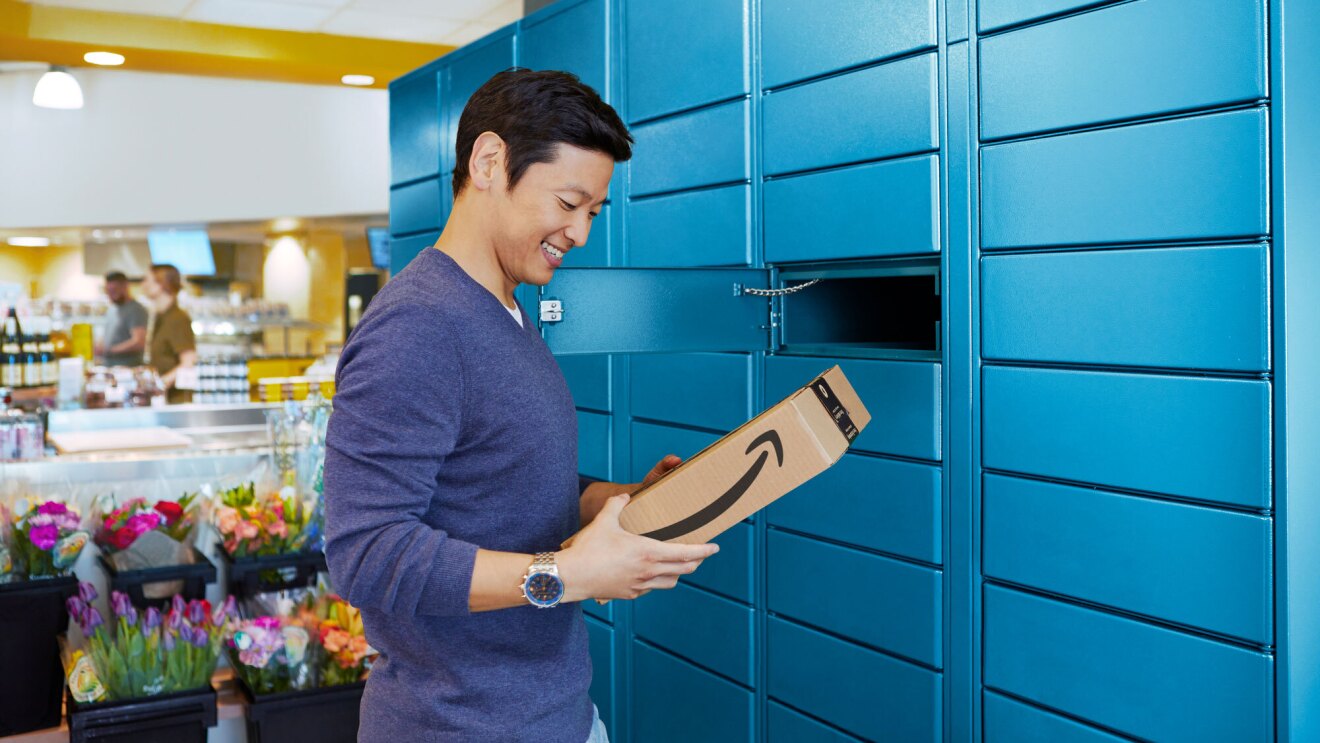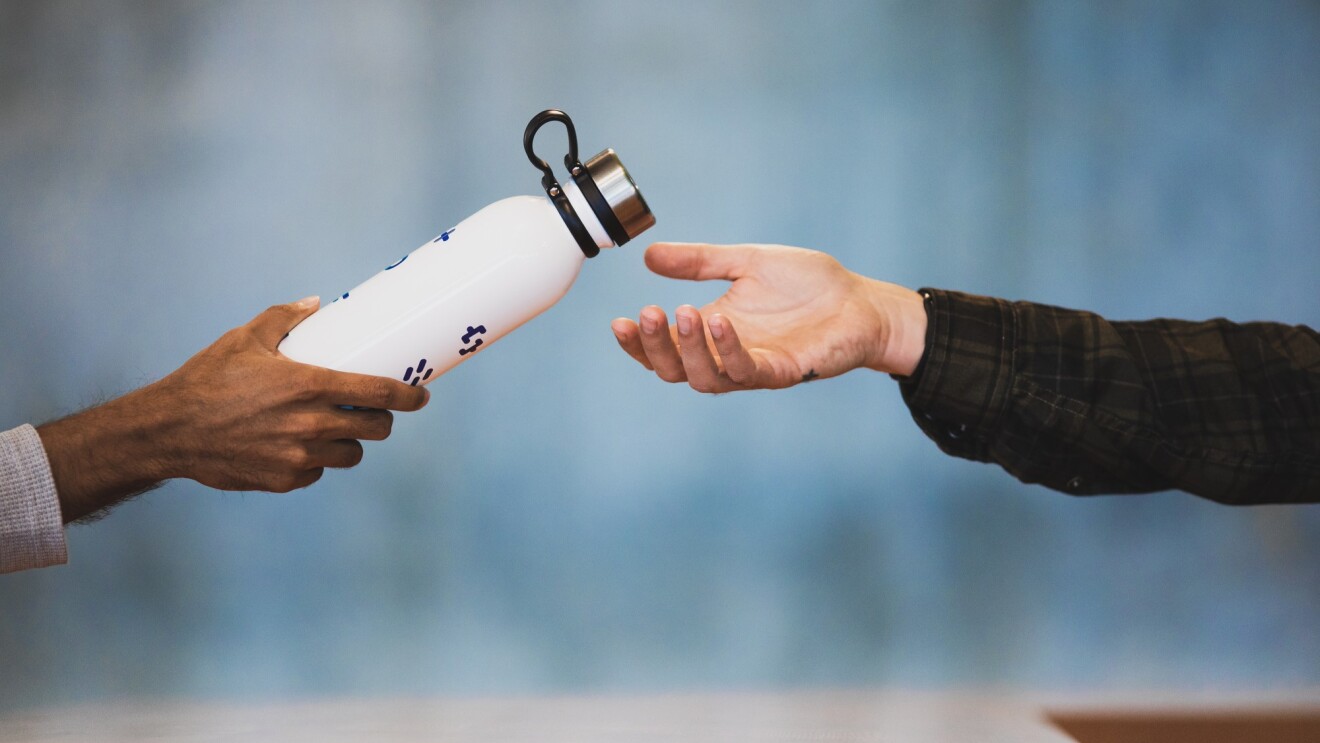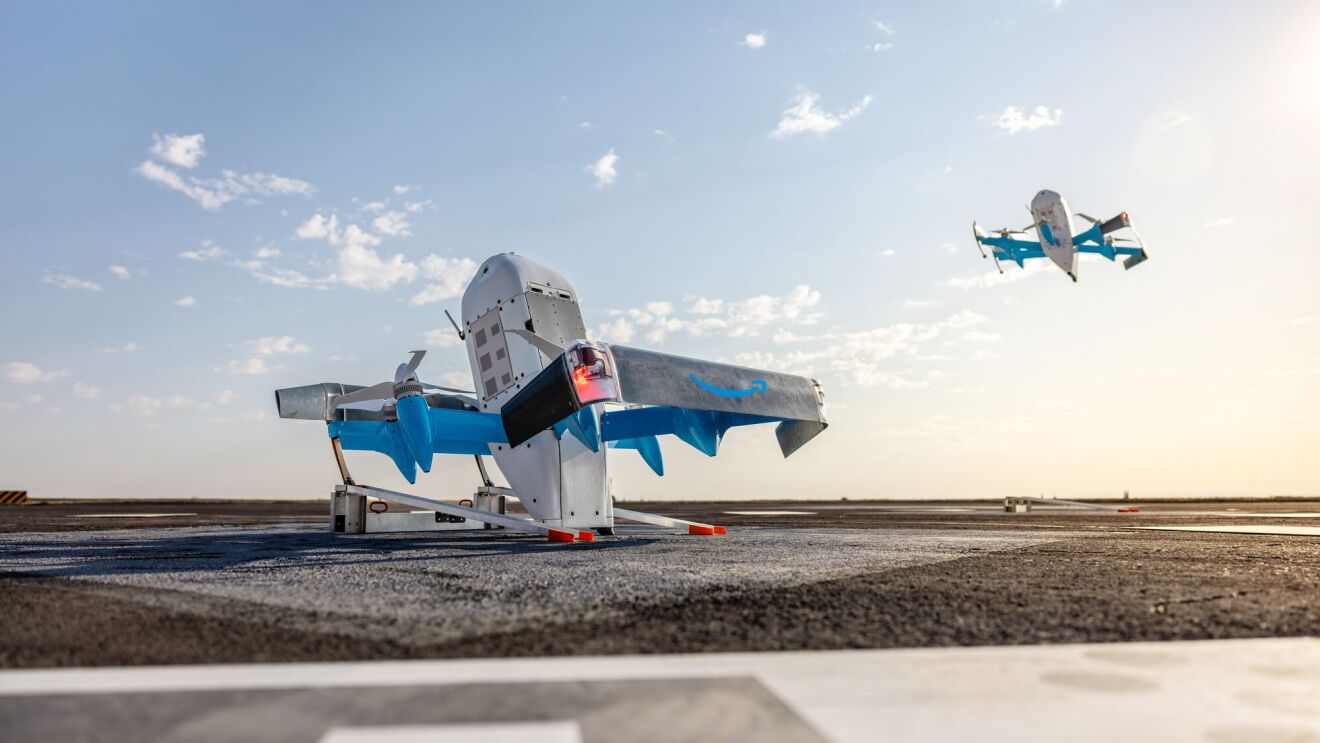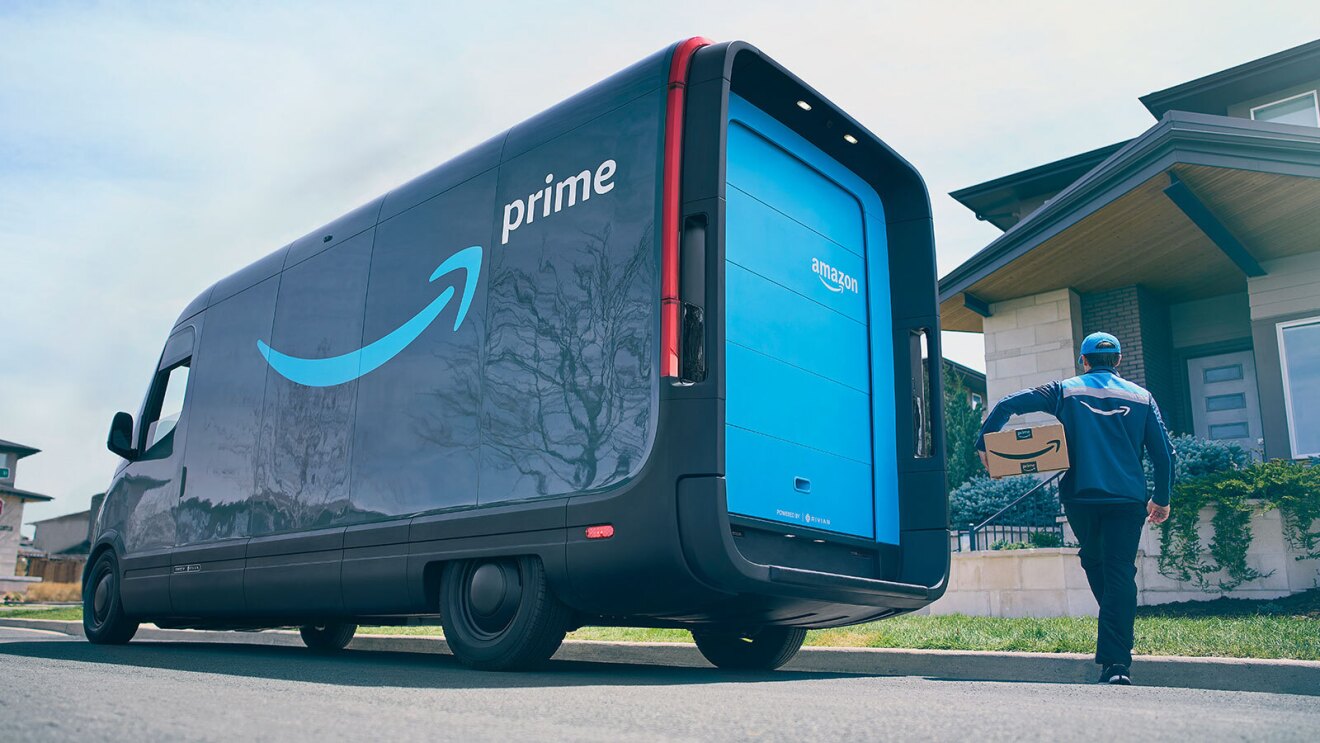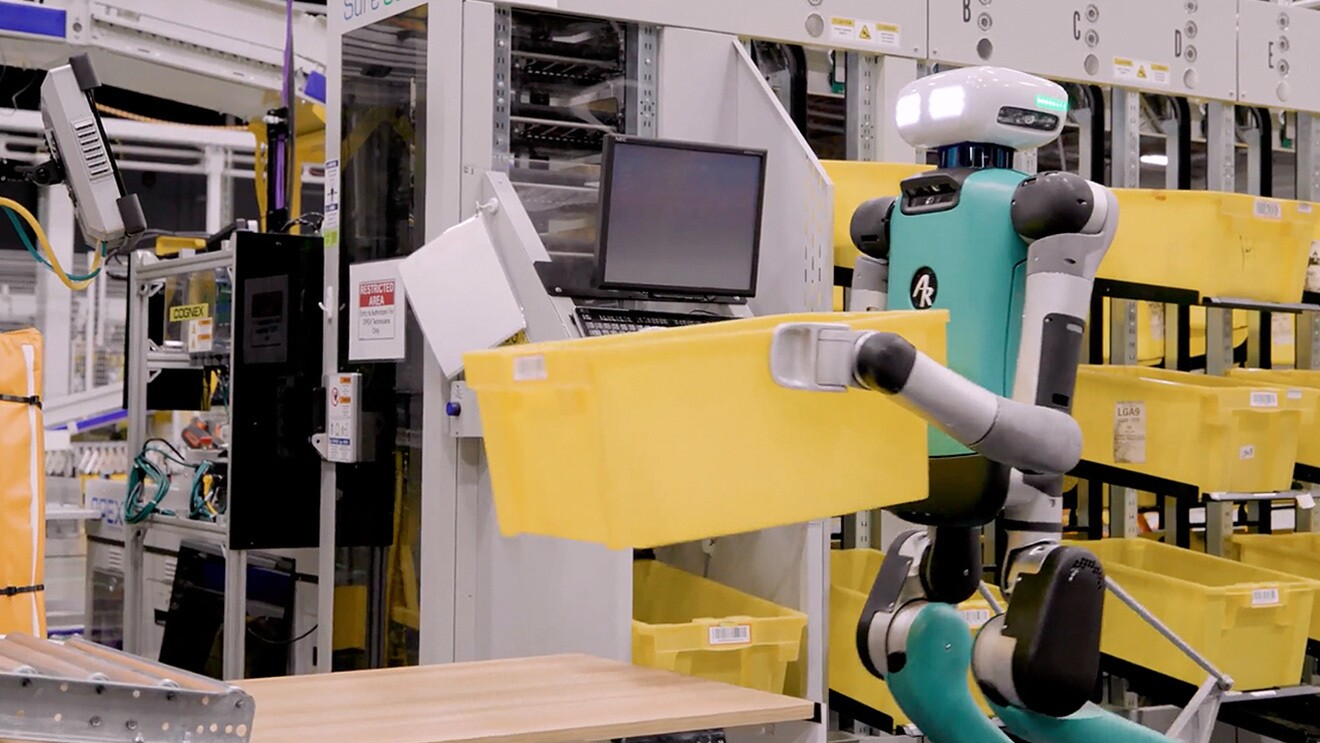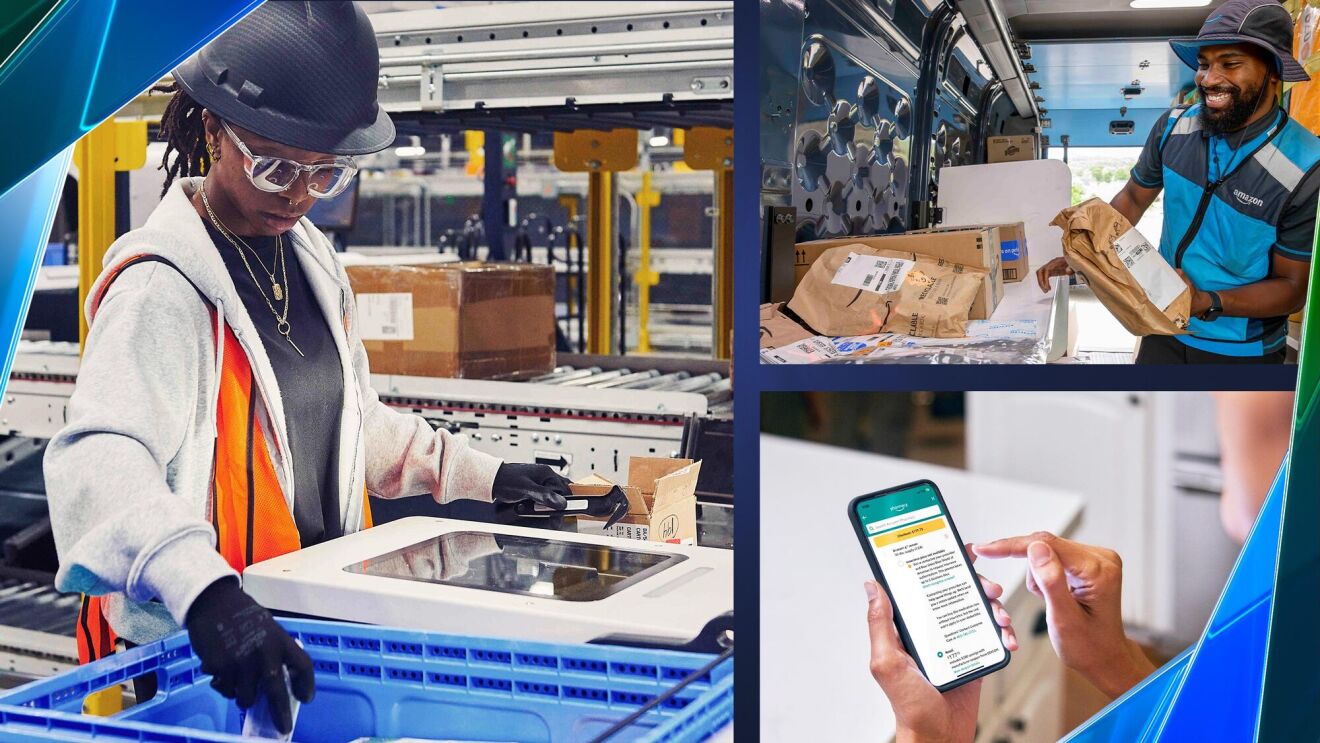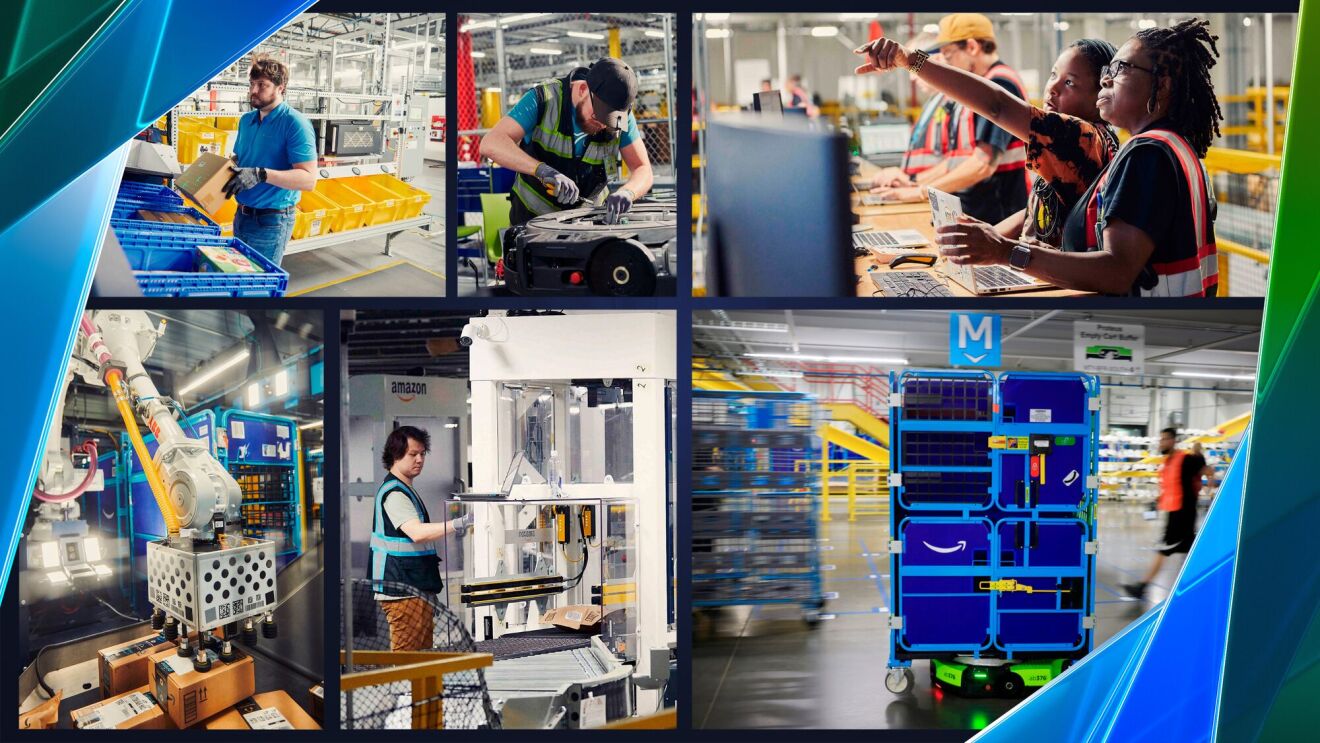Orange robots, about the size of a big suitcase, buzz through the Amazon sortation center in Denver, Colorado. Conveyor belts on top of the robots look like a mini treadmill for packages that are delivered to one of hundreds of chutes in the warehouse. Amazon associates rely on software to guide the company's newest robotic drive units, which help get packages to customers more quickly.
"If you had told 10-year-old me that my job would revolve around robots every day, there's no way I would have believed you," said Cathryn Kachura, an Amazonian who keeps the robots running.
We will need to hire more people to help sustain the increased productivity levels. This is the chain reaction of job growth we strive for when designing robotic systems.
Steve Campbell, director of Amazon Robotics Product Strategy
Kachura didn't have experience with robotics. What she did have, was grit and potential – qualities her managers spotted in her from day one. It wasn't long before she was promoted into a full-time role with greater responsibility. Recently, leadership approached her with a new opportunity. "They said, 'Hey, Cat, we have this flow control specialist role coming up. We'd like to put you in the role and give you this opportunity because you have worked and proven your skills, and we know this will be something you'll be good at.'"
Today, Kachura is one of five flow control specialists at Amazon's Denver sortation center, where customer packages from the company's fulfillment centers are sorted by zip code before they're sent out for delivery. Her job is to manage inbound and outbound package volume and distribution. But she doesn't do it alone. She and her team rely on roughly 800 robotic drive units to do a lot of the heavy lifting. "We employ the same number of people now that we did before we had the robotics field. The robots just pick up the extra workload."
Resembling an orange nightstand on wheels, the two-feet-high, 3-feet-wide Pegasus drive is Amazon's newest robot designed to create greater efficiency in its sortation process so customers can receive their orders even faster. They represent Amazon's highest ever drive density in its network, requiring the need for "robot traffic control."
01 / 04
Steve Campbell, director of Amazon Robotics Product Strategy, was leading the team as these robotics were developed and deployed. "After months of hard work and testing, it is exciting to see this robotic solution come to life and to meet the flow controllers like Cathryn who monitor the health of the system. The robotic system will increase the building capacity, and as it scales we will need to hire more people to help sustain the increased productivity levels. This is the chain reaction of job growth we strive for when designing robotic systems."
Each drive is topped with a conveyor belt. It rolls up to a station where an associate on the other side of a barrier fence scans a package, places it on the robot, and off it goes – navigating a "robot highway" inside the Denver sortation center. On-board cameras sense any surprise obstacles as the unit follows its programmed journey to an eject station. The conveyor moves the package off the unit and down the chute where it's then readied for delivery. The robot completes its entire journey in roughly two minutes.
Kachura and her team monitor real-time robot traffic flow maps on Kindles, so they can quickly address any issues with facility managers, and adjust the sortation center's inbound and outbound package volume as it fluctuates with customer demand.
All of the flow control specialists received on-the-job training from Amazon Robotics engineers to learn how the Pegasus drives work, how they're programmed, and the way they read the robotics floor. "They've gone out of their way to really fill in all our knowledge gaps," Kachura said.
Nicole Bayer started working at Amazon part-time as she transitioned back to work after taking time off to be with her three young children. She and Kachura joke about one day delivering a TED talk about being the first flow control specialists working in Amazon Robotics. "It was the absolute last thing I ever expected I'd be doing," Bayer said. "I knew nothing about robotics coming into this role. To be involved with a project of this caliber and be handed the reins is a once-in-a-lifetime opportunity."
"Our goal was to create a flexible sortation system that could handle a higher volume of package type. It is really exciting to see how our newest system benefits our customers and creates new career opportunities for our associates," said Campbell.
In the first six months of the robots going live at the Denver sortation center in October 2018, they traveled more than 1.5 million miles. Amazon plans to continue rolling out the program in other U.S. sortation centers in 2019.
Trending news and stories






